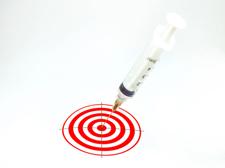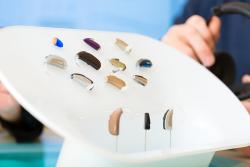During the past several years, the media has talked continuously about health costs in general and medication costs in particular.
During the past several years, the media has talked continuously about health costs in general and medication costs in particular. The New York Times has run several pieces, including: Many Struggling With Prescription Drug Costs, Concern Over Drug Costs, and As Drug Costs Rise, Bending the Law is One Remedy as well as numerous others.
Patients are struggling. Costs are exorbitant for some cancer drugs. Many patients bankrupt themselves trying to pay, and many just go without.
Some insurance companies pay for these medications, but many only pay for a percentage of the total. For some patients, the co-pays and deductibles are extremely high.
However, there is help.
Organizations like the Patient Access Network Foundation (PAN) can help patients access the medications they need.

The PAN Foundation mission statement reads:
The Patient Access Network Foundation offers help and hope to people with chronic or life-threatening illnesses for whom cost limits access to breakthrough medical treatments
PAN was founded in 2004 and since then has provided more than 200,000 underinsured patients with over $400 million dollars in assistance. Patients can receive between $500 and $15,000 a year in co-payment assistance. PAN provided nearly 91,000 grants in 2013 alone.
Amy Niles (photo at right) is Director of Patient Advocacy and Professional Relations at PAN. Niles has a background in healthcare administration and patient advocacy and now works with PAN to develop their outreach strategy.
In 2010, PAN provided 16,000 grants; in 2013 that number increased to 91,000 and already in 2014 they have approved about 50,000 grants. The disease funds operated by PAN are supported through donations from a wide range of donors, including pharmaceutical companies, medically related organizations, individuals and foundations.
Niles comments,
“We are growing very quickly. We know that there are patients out there who need our help. We work a great deal with patient advocacy groups and professional medical associations so that their members and constituency know about the financial assistance that’s available to patients. As part of our outreach, we work with patient advocates, social workers, navigators and other professionals, who are working every day with patients, helping them understand financial options. The role of the patient advocate has grown significantly over the past ten years.
Receiving assistance from PAN is easy. Patients can apply online or by phone. Some patients apply for grants directly, but 2/3 of the grant requests come from providers or specialty pharmacies acting as advocates for their patients.
There are certain criteria patients must meet to qualify for a PAN grant. (PAN operates nearly 60 disease funds; about half are cancer related, and the other half are chronic or rare disease related.)
- Patients must be insured and their insurance must cover the medication for which they seek assistance.
- The medication must treat the disease directly.
- Patients must reside and receive treatment in the United States.
- Patients’ income must fall at or below 400-500% of federal poverty level. For example, at 500%, this means that a family of 2 must earn an annual income of $78,650 or below
Depending on the disease fund, patients, if approved, may receive between $500 and $15,000 for a 12 month period. For example, the grant amount for a patient with multiple myeloma is $10,000. The grant amount for a patient with metastatic breast cancer is $7500. This money is usually paid to providers or pharmacies directly, but patients can apply themselves, and be reimbursed for expenses incurred.
Also, there is a 90 day “look back” time which means that once a patient is approved, they can go back 90 days and submit out-of-pocket expenses for reimbursement.
When asked how the amount is calculated, Niles explains,
“We work with an actuarial firm that helps us determine the amount that, in general, patients will need to help them with their co-payment. This amount is arrived at after a very lengthy analysis of claims data, population, disease prevalence and so forth.”
One big advantage of dealing with PAN is its efficiency. PAN has created a secure portal for Providers and Specialty pharmacies that allows them to apply for grants online and get approval for patients immediately. They can manage multiple patients in one location, track claims online and keep accurate records of monies received and spent. They can renew grant applications through the portal and really manage the process for the patient. And PAN response time is under one minute!
Niles comments,
“What is nice about our process is that the grant is approved in one minute or less. So whether you apply on the website or by phone or through the provider/specialty pharmacy portals, you will know immediately if you or your patient is approved or not. Everyone appreciates this. PAN has invested a lot in technologies and efficiencies over the years. We pride ourselves on our efficiency and can tell patients that 95% of every dollar received goes back to the patients. And we are constantly trying to be more efficient. We keep track of the latest treatments and medications. Our focus is to ensure that our disease funds are funded sufficiently so that we can take care of as many patients as possible.
There are far too many barriers out there for patients and PAN, through its work, wants to do its share in making it as easy as possible for patients. Through all of the technological advancements, we have not lost the “personal touch”. We have a very active call center where we take care of our patients on a one-on-one basis. Call Center representatives are there to answer patients’ questions, even if they do not directly relate to our grants.
When asked what the main obstacles are for obtaining assistance from PAN or any like organization, Niles explained that one issue is overall awareness. Patients often don’t know how or where to apply for assistance.
“It is a real challenge for patients to know where to turn when diagnosed with a serious illness. There is such a need for greater awareness about what is available. We are glad that there has been enormous growth in the number of patient advocates over the past several years. They can guide patients through the system to identify places they can turn to for financial and other assistance. They are a great resource.
Should patients who contact PAN not be approved for grants (because they fall outside our guidelines) we may refer them to an organization called NeedyMeds.org. NeedyMeds is an online clearing house of all sorts of patient assistance programs, that can help match patients’ needs with specific programs. This is important, as we don’t want any patients falling through the cracks.
And patients are appreciative. Just listen to this testimonial:








